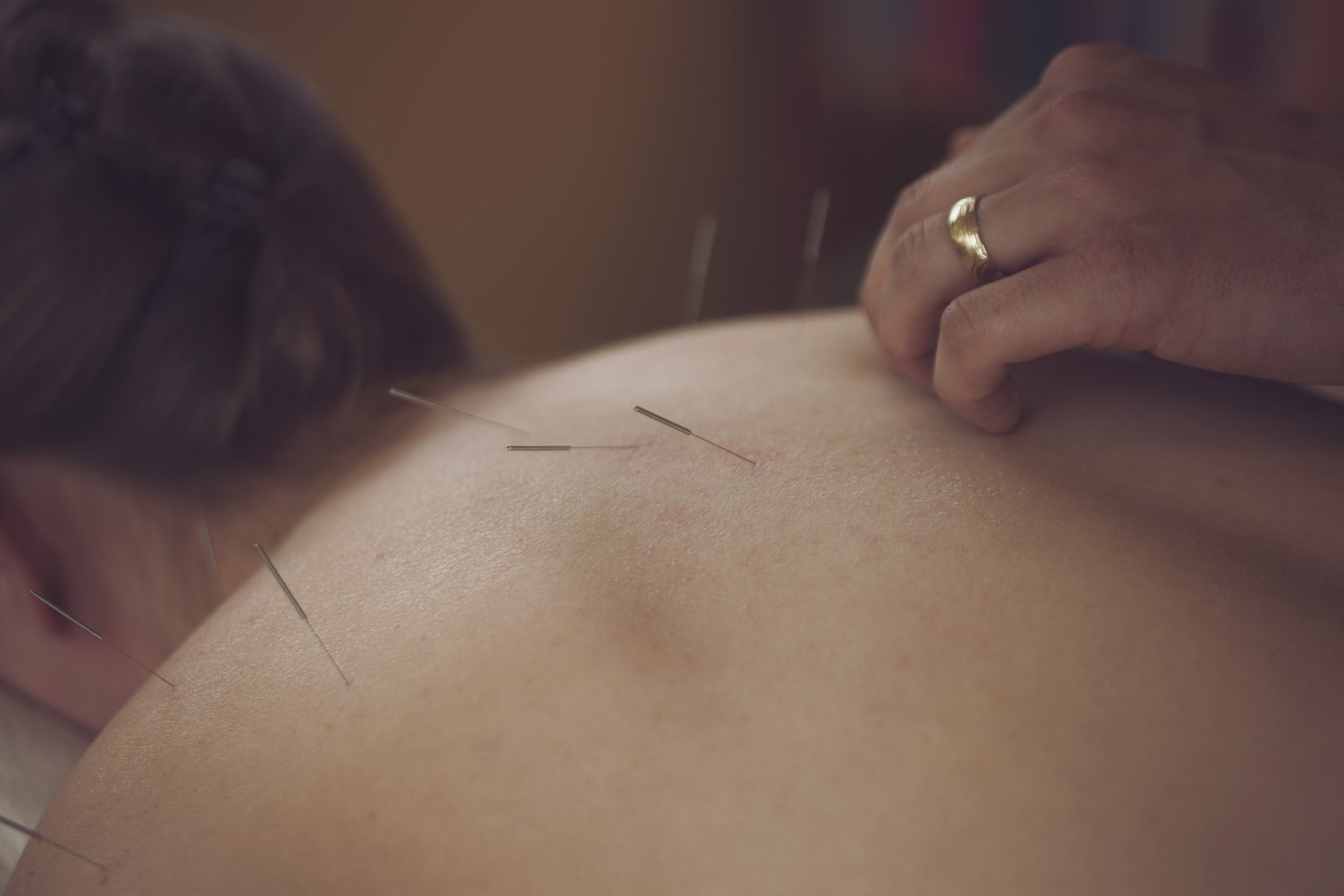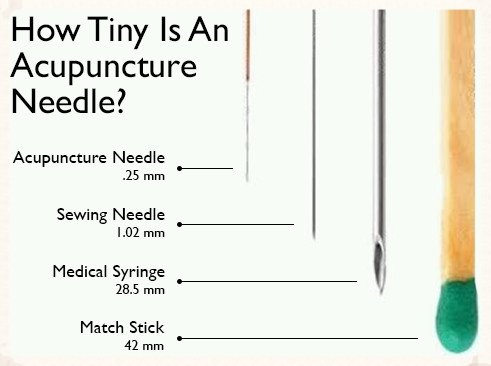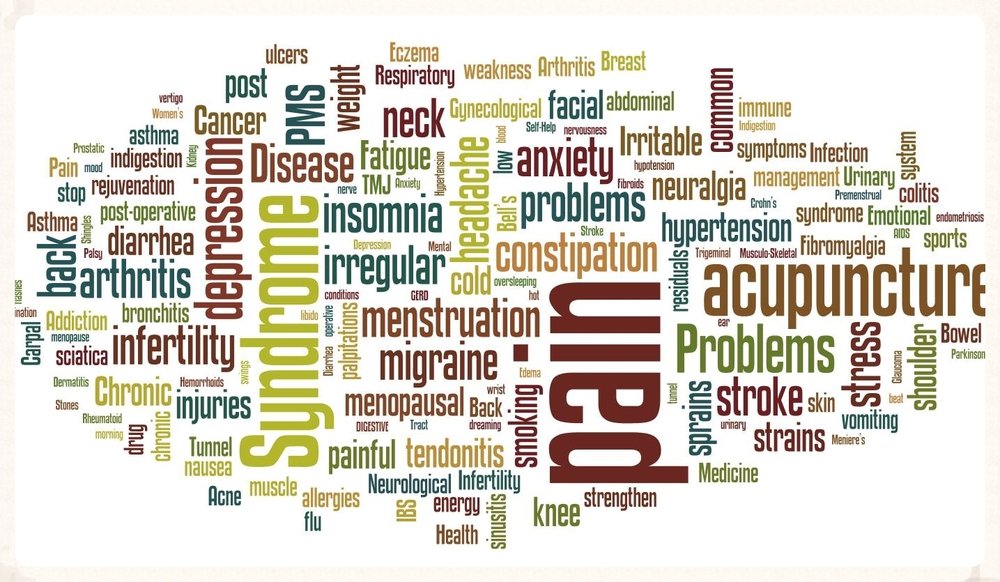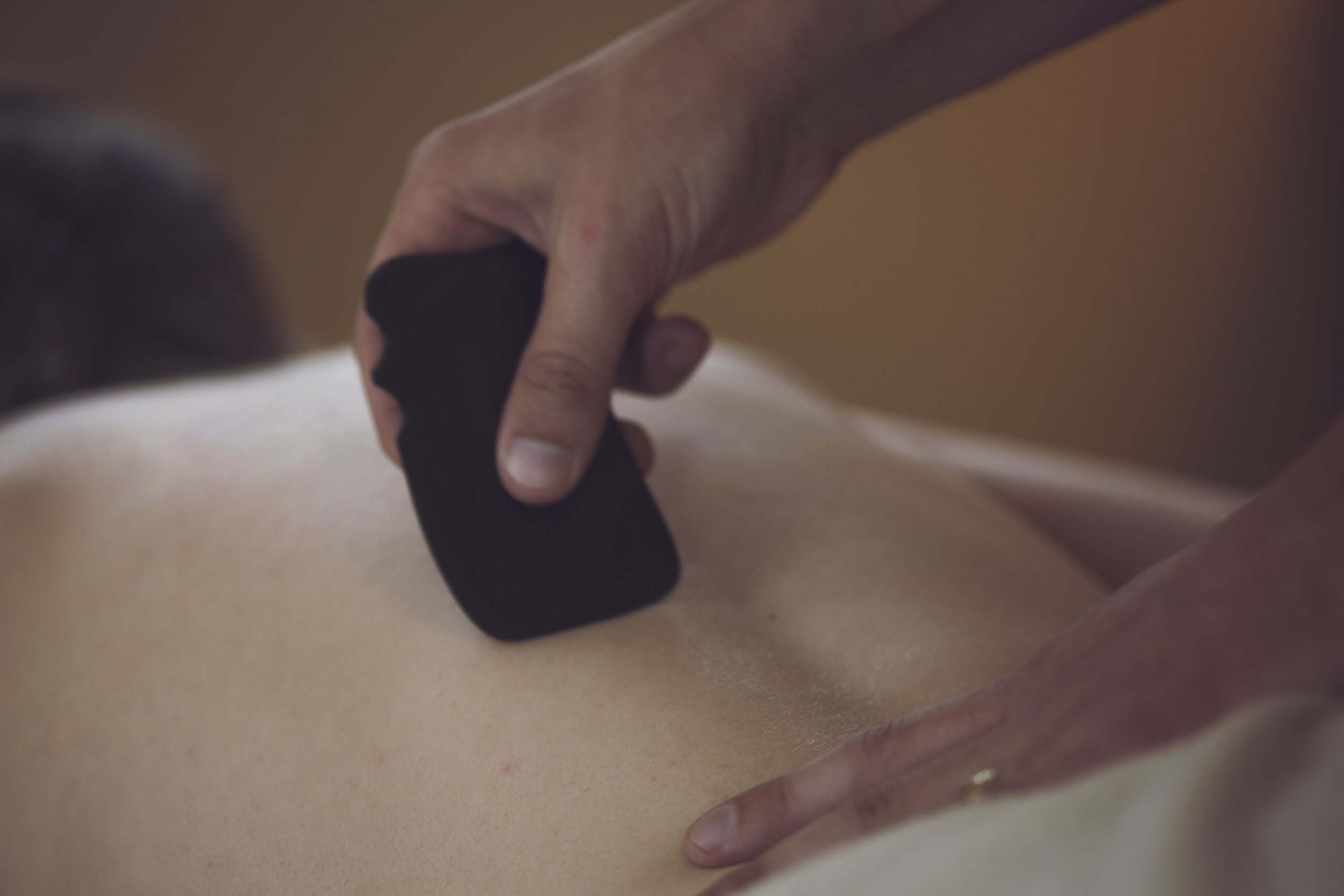Acupuncture
Acupuncture Needling
Simply put, the insertion of acupuncture needles into specific points throughout the body stimulates the nervous system as well the circulatory system. Inflammatory responses are created thereby increasing the flow of blood, oxygen, and nutrients to specific areas of the body in order to promote the healing process. Acupuncture needles will also trigger the central nervous system to release natural opioids and endorphins to target an area of discomfort, and ultimately put an end to a chronic pain cycle.
As you can tell from the images, acupuncture needles are incredibly thin and should not be painful upon insertion. Patients may feel tingling, warmth, pressure, or a dull ache, but no sharp pain should be elicited. Needles are only used once, packages are opened in front of the patient, and disposed of immediately after removal.
Acupuncture treatments lengths vary in time depending on the symptoms and patterns with which a patient presents. Needle retention usually lasts a minimum of 20 minutes and rarely more than 45 minutes.
Traditional Chinese Medicine
With a history of 2000 to 3000 years, Traditional Chinese Medicine (TCM) has formed a unique system to diagnose and cure illness. The TCM approach is fundamentally different from that of Western medicine. In TCM, the understanding of the human body is based on the holistic understanding of the universe as described in Daoism, and the treatment of illness is based primarily on the diagnosis and differentiation of syndromes.
Evaluation of a syndrome not only includes the cause, mechanism, location, and nature of the disease, but also the confrontation between the pathogenic factor and body resistance. Treatment is not based only on the symptoms, but differentiation of syndromes. Therefore, those with an identical disease may be treated in different ways, and on the other hand, different diseases may result in the same syndrome and are treated in similar ways.
Scope of Practice
There is a good reason this medicine has been practiced for thousands of years, and positive clinical results do not lie. As the popularity of acupuncture gains traction in the West, more and more peer-reviewed research surfaces every day touting the benefits of this wonderful medicine.
Acupuncture is a natural, safe, and effective way of treating a myriad of illnesses and injuries, both chronic and acute. A few examples of commonly treated problems are:
Aches and pains, arthritis, neuralgia, tendonitis, sinusitis, asthma, allergies, digestive issues, high blood pressure, headaches, migraines, PMS and gynaecological issues, stress, insomnia...to name only a few.
At Oceanside Acupuncture & Massage Therapy, we have a special interest in treating chronic pain, as well as symptoms of anxiety and depression.
Please get in touch to find out how acupuncture can help you.
Cupping
Cupping is the term applied to a technique that uses small glass cups as suction devices that are placed on the skin. Suction is created by placing an inverted cup over a small flame, then applying it directly to the skin once a vacuum is created. Flames are never used near the skin and are not lit throughout the process of cupping, but rather are a means to create the heat that causes the suction within the small cups.
Once the suction has occurred, the cups can be gently moved across the skin (often referred to as "gliding cupping). The suction in the cups causes the skin and superficial muscle layer to be lightly drawn into the cup. Cupping is much like the inverse of massage - rather than applying pressure to muscles, it uses gentle pressure to pull them upward. For most patients, this is a particularly relaxing and relieving sensation. Once suctioned, the cups are generally left in place for about ten minutes while the patient relaxes.
Generally, cupping is combined with acupuncture in one treatment, but it can also be used alone. The suction and negative pressure provided by cupping can loosen muscles, encourage blood flow, and sedate the nervous system (which makes it an excellent treatment for high blood pressure). Cupping is used to relieve back and neck pains, stiff muscles, anxiety, fatigue, migraines, and rheumatism.
Moxibustion
Moxibustion is the process where moxa sticks, made of dry mugwort leaves (Artemisia vulgaris) is ignited and held about an inch above the patients’s skin over specific acupuncture points. Moxa is available in a loose form that can be used for making moxa cones. Alternatively, moxa is packed and rolled in a long stick like a large cigar, or in small cones with a protective bottom layer that adheres to the skin (as pictured). The purpose of this process is to warm the qi and blood in the channels. Moxibustion is most commonly used when there is the requirement to expel cold and damp or to tonify the qi and blood. A single treatment of moxibustion usually lasts 10-15 minutes. Needle-warming moxibustion combines needling and moxibustion by attaching a moxa stub (about 2 cm long) to an inserted needle. This method enhances the effects of needling and is often used to treat chronic rheumatism and rheumatoid arthritis, among many other conditions.
Gua Sha
Gua sha is another healing modality of Traditional Chinese Medicine. Sometimes called ‘coining, spooning or scraping’, Gua sha is defined as instrument-assisted unidirectional press-stroking of a lubricated area of the body surface to intentionally create transitory therapeutic petechiae called ‘sha’ representing extravasation of blood in the subcutis.
Modern research shows Gua sha produces an anti-inflammatory and immune protective effect that persists for days following a single Gua sha treatment. This accounts for its effect on pain, stiffness, fever, chill, cough, wheeze, nausea and vomiting etc., and why Gua sha is effective in acute and chronic internal organ disorders including liver inflammation in hepatitis.
Food Therapy
I recall a teacher once telling me that according to TCM, the health of an individual is predominantly determined by their diet. Perhaps as much as 95% of your well-being will stem from what you eat. And this is certainly a concept that resonates with Western medicine as well. It certainly makes sense if, day in and day out, you are stuffing yourself to the brim with junk food, you probably won't feel too well and your health will suffer for it. And so, if you thought that acupuncture was a miracle cure for everything that ails you - well, the needles can only help so much!
What is so wonderful about Chinese food therapy, is the fact that food recommendations are based on the individual. What is good for one person, might not be good for the other.
As a general rule, I borrow my food philosophy from Michael Pollan, author of The Omnivor's Dilemma. He boils down nutrition to 7 simple, yet incredibly powerful words : Eat food. Not too much. Mostly plants.
Acupuncture is truly a holistic medicine - it takes into account the whole picture of an individual. Your lifestyle, constitution, family history, exercise habits, and naturally - your diet. Nutrition advice is a part of an acupuncture treatment plan, and you should not hesitate to ask for food recommendations or healthy recipes.
Tui Na Massage
Tui Na is Chinese therapeutic massage. The word 'Tuina' actually means 'pushing & grabbing'. Some of the common techniques include rolling, pushing, grasping, kneading, rubbing, vibrating, chopping, revolving, pinching, and pressing.
These techniques are used individually or combined together, and applied on specific acupuncture points, along a channel or meridian, or a whole area of the body.
Although best known for its capacity to heal joint problems and create relaxation, Tui Na can also help with many other disorders.
Pulse & Tongue Diagnosis
Have you ever wondered why your acupuncturist feels your radial pulse and asks to have a look at your tongue? Although it might seem strange at first, they are both powerful tools that help in reaching a proper TCM diagnosis.
The tongue provides us with valuable information that helps us to correctly diagnose the energetic pattern in your body, the root cause of whatever sickness or pain you are experiencing, and how to treat it. We look at the color, shape, texture, and thickness of the tongue, as well as the color, thickness, and quality of the tongue coat. You would be amazed at how different tongues can look between two individuals!
A western medical practitioner will feel the pulse to count beats per minute. An acupuncturist will feel each wrist with the pads of her left index, middle, and ring finger.
These 3 fingers will assess a pulse: heart and lung pulses with the index finger, liver and spleen pulses with middle finger, and kidney pulses with ring fingers. The acupuncturist is looking for not only the rate of the pulse but also the depth and quality.
Many things can be determined by the pulse and can include: emotions, pain, a women's menstrual cycle, if a cold is coming on, or how old or new a condition is to name a few.
Before Your Appointment
* Before coming in for your first treatment, please take the time to fill out the online forms. It will save time during your appointment - it can take 5- 10 minutes to fill out. Thank you!
*A mandatory pre-screening health questionnaire will be sent to you 48 hours prior to each appointment. Please ensure it is completed the day before your appointment at the latest. If it is not completed in time, your appointment may be cancelled.
* It is not recommended to come to an acupuncture treatment on an empty stomach as it can cause light-headedness.
* Please wear loose clothing (i.e. pants that can easily roll up past knee, sleeves that can easily roll up past elbows).
* Sept. 2023 update: Now accepting debit and credit cards!
* The clinic is a scent-free environment. Please refrain from wearing fragrances or smoking prior to your appointment.
Cancellation Policy
*Your appointment time is reserved just for you. A late cancellation or missed visit leaves a hole in the therapists’ day that could have been filled by another patient. As such, we require 24 hours notice for any cancellations or changes to your appointment. Patients who provide less than 24 hours notice, or miss their appointment, will be charged a $40 cancellation fee. (Please note, no cancellations fees are charged if you need to cancel because of sickness - stay home if you are not feeling well!)
Direct Billing
Good news! We offer direct billing for both acupuncture and massage therapy treatments.
We are registered providers for all the major insurance companies, including Medavie Blue Cross, Telus Health, Sun Life, Green Shield, Canada Life, Desjardins, just to name a few.
All you have to do is bring in your insurance information with you to your appointment, and we’ll set everything up for you. If you’d like to know in advance how many treatments your insurance will cover, and if you have any co-pay amounts, please get in touch with your insurance company directly.



















